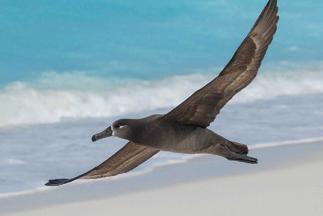
1 minute read
NMFS Issues Region’s First Experimental Fishing Permit
On Jan. 27, 2021, the National Marine Fisheries Service (NMFS) issued the first Experimental Fishing Permit under the Council’s Fishery Ecosystem Plans. The permit allows tori lines (also known as bird scaring lines or streamer lines) to be tested, which have shown promise in reducing incidental interactions with seabirds in the Hawai‘i deep-set longline fishery, without the use of blue-dyed bait. Blue-dyed bait is an existing seabird mitigation requirement in the fishery that has been shown to be less effective than other required measures over time.
A joint Council, NMFS and Hawaii Longline Association (HLA) project in 2019-2020 showed that tori lines, when used in addition to blue-dyed bait, are effective in reducing interactions with seabirds. Following that study, at its September 2020 meeting the Council recommended additional field trials to directly compare the efficacy of tori lines against blue-dyed bait so that results could inform Council deliberations on modifying the required measures for the fishery. NMFS approved the application submitted by HLA and field trials under the permit will be conducted in spring and early summer 2021.
Advertisement
Gilman, E., Naholowaa, H.A., Ishizaki, A., Chaloupka, M., Brady, C., Carnes, M., Ellgen, S., Wang, J., Kingma, E. 2021. Practicality and Efficacy of Tori Lines to Mitigate Albatross Interactions in the Hawaii Deep-set Longline Fishery. Western Pacific Regional Fishery Management Council. Honolulu, Hawaii, 48pp. https://tinyurl.com/torilinesreport










